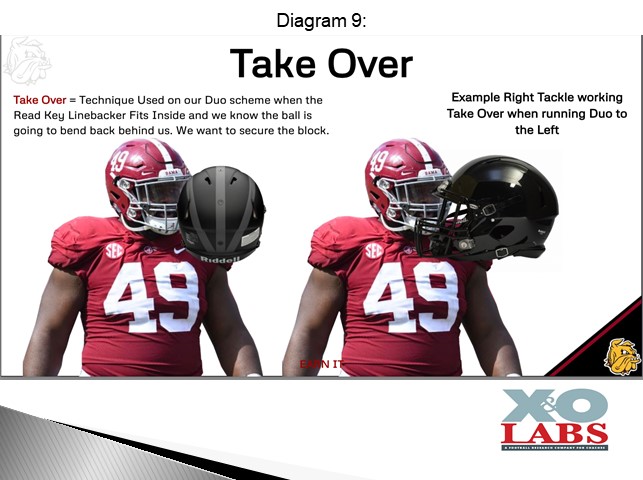By Mike Kuchar with Loren Endsley
Offensive Line Coach
University of Minnesota Duluth
We all know Duo to be a “culture play” that’s built off violent doubles along the line of scrimmage. At Minnesota Duluth, the offensive line room refers to the play as a “bucket of blood.” “It is a play that allows us to shut off our brain a bit and focus on hammering the first level of the defense,” said Coach Endsley. “We can be full speed and put our face on somebody and not have to worry too much about rules.” Duluth was mainly an outside zone/mid-zone operation, so Duo became a great downhill complement when those safeties started to flow laterally to defend those perimeter runs. It’s been a consistent and efficient concept all season.
Coach Endsley provides the “A to Z” of Duluth’s Duo scheme in this clinic report. And he starts with the heart of what makes the concept effective- the double teams at the line of scrimmage.
The Drive Combo:
Coach Endsley calls his double teams “Drive Combinations” and they are built off zone tree principles. He separates the combinations based on the front side and backside of the scheme:
- The Goal of a Drive Combo on the Frontside of the Scheme is to Nail Down the Near Shoulder & Create a Wall
- The Goal of a Drive Combo on the Backside of the Scheme is to Create Distortion of the Defense
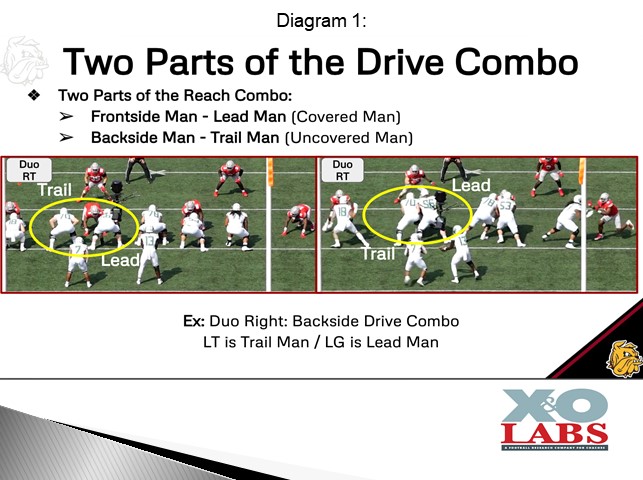
Lead Man vs. Trail Man Distinction:
The lead man is the covered offensive lineman in the scheme. Whether he is covered on his playside shoulder or backside shoulder, he is still considered the lead man.
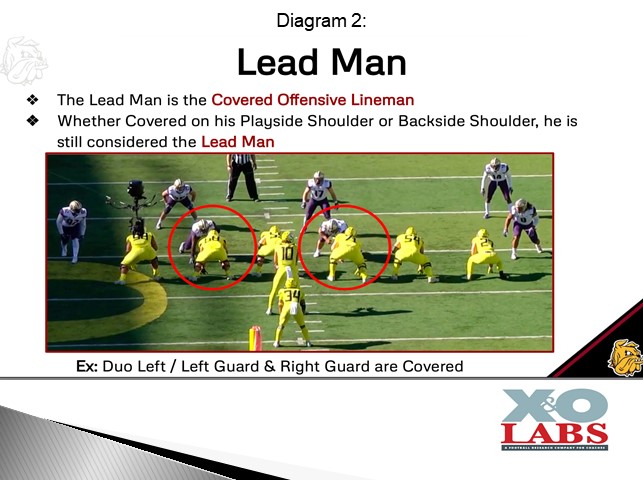
The trail man is the uncovered offensive lineman who can be uncovered working to an open or closed gap.
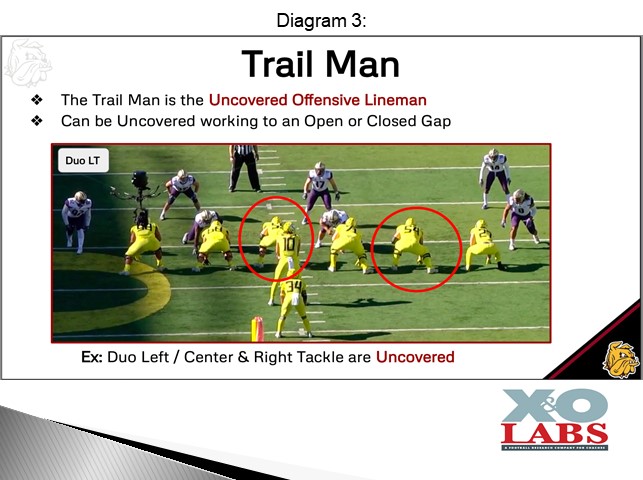

Coach Endsley teaches this fundamental using his High Hip Carry Drill where the hands will be on the down defender with eyes on the linebacker. Coach Endsley talks about “hands on the wheel, eyes looking through dashboard.” Clearly, the idea is to not have any space between the combination block.
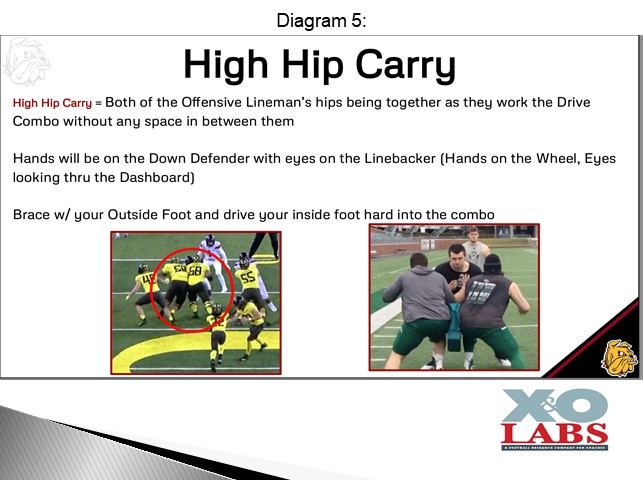
When it comes down to understanding which lineman will work to second level, a great deal of importance is placed on whether lineman are working to a “thick” or “thin” linebacker.
- Thick Backer = Backer in an Alignment that Allows you to stay on the Combo Longer
- Thin Backer = Backer in an Alignment that Forces you to leave the Combo Earlier

In order to do this, Coach Endsley teaches a double under technique, taking on the linebacker square. He wants his earhole to the far pec of the defender. “If the linebacker triggers hard downhill or pressures we can double under, meeting his force with leverage getting under him and lifting up,” said Coach Endsley. “If he is running away from the gap we go earhole to far pec and guide or accelerate his movement.”
An emphasis is placed on the departure of the Drive Combination to the linebacker. In order to get that done, Coach Endsley teaches and angle step which eliminates any wasted movement. The goal is to get their hips in line to generate power on the linebacker.

For the lineman taking over the first-level defender, Coach Endsley teaches what he calls a “Helmet Redirect” technique which is used to gain leverage on the down lineman. It allows the blocker to regain leverage on the down defender. This is used on the frontside of a Closed Drive Combo (see below), to nail down the near shoulder and create a wall. “We wouldn’t do it on the backside combo because the running back would read the linebacker and bend it out behind us,” he said.

The Take Over technique is used on the Duo scheme by the Trail Man when the Read Key Linebacker Fits Inside and it’s known the ball is going to bend back behind. “We want to secure the block,” said Coach Endsley.
